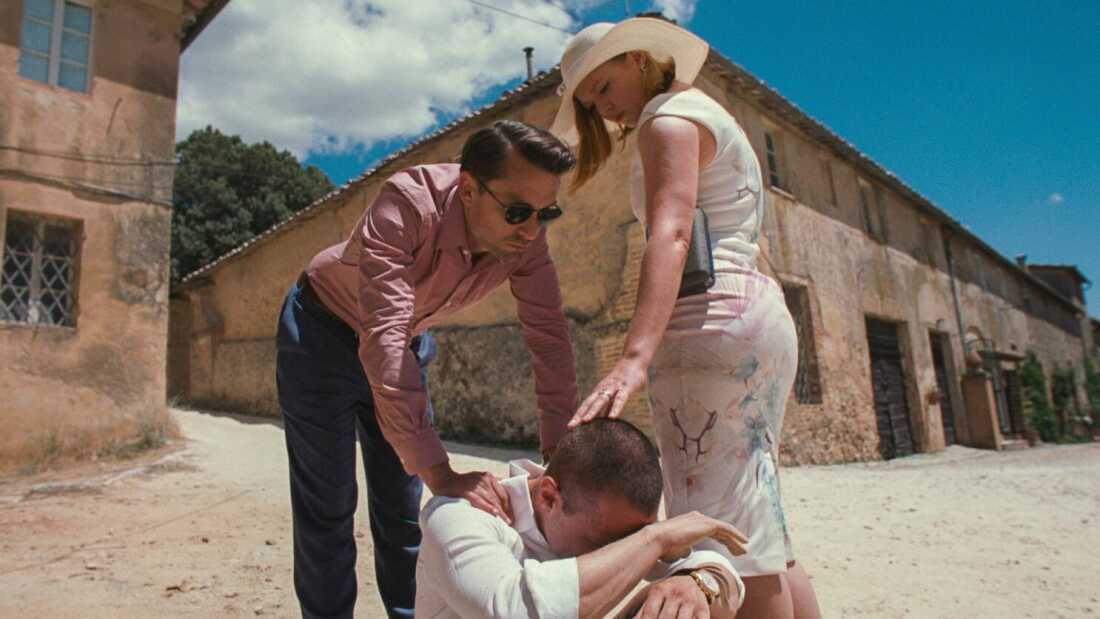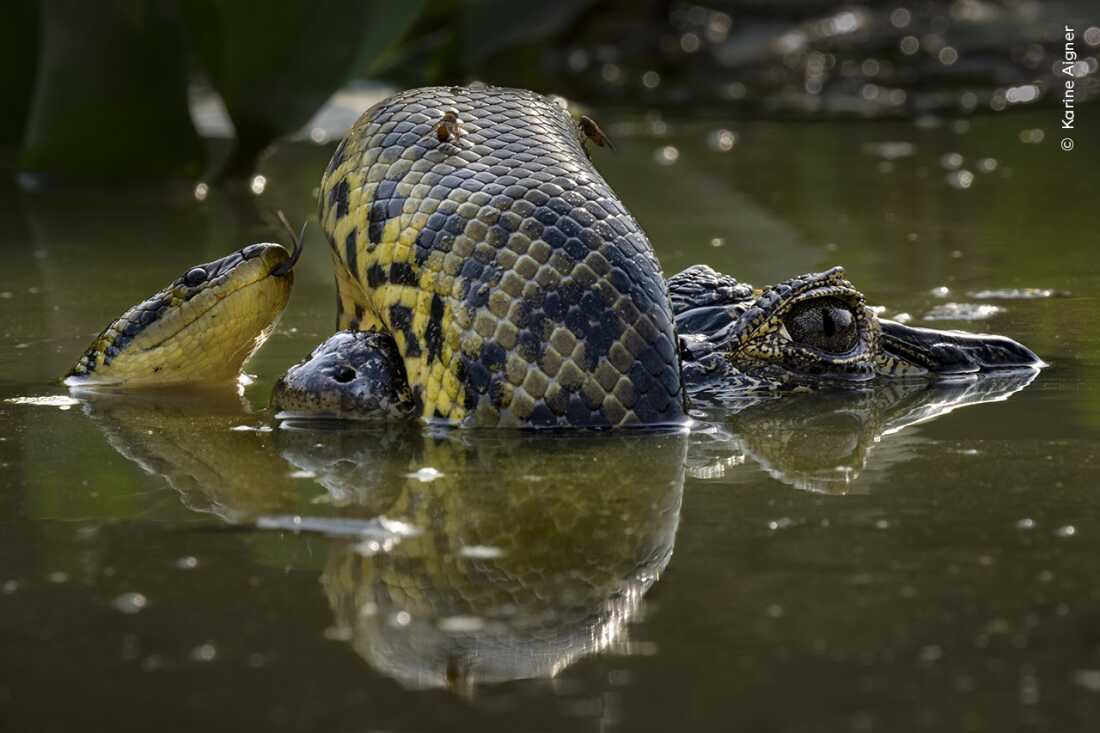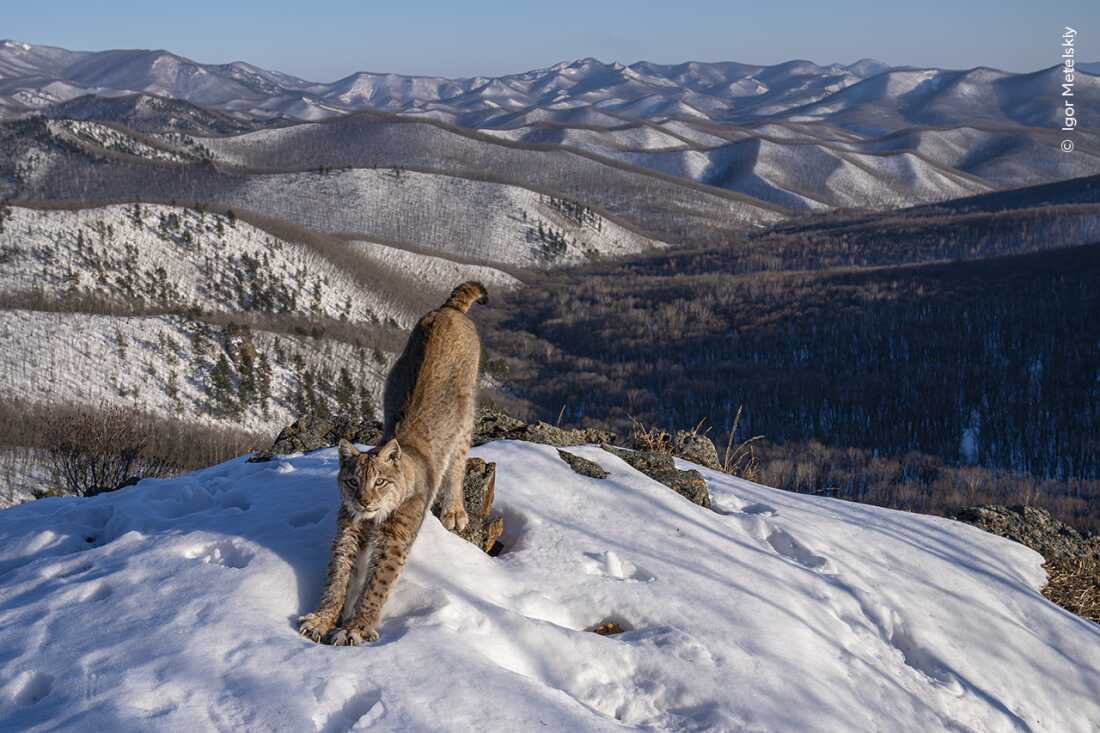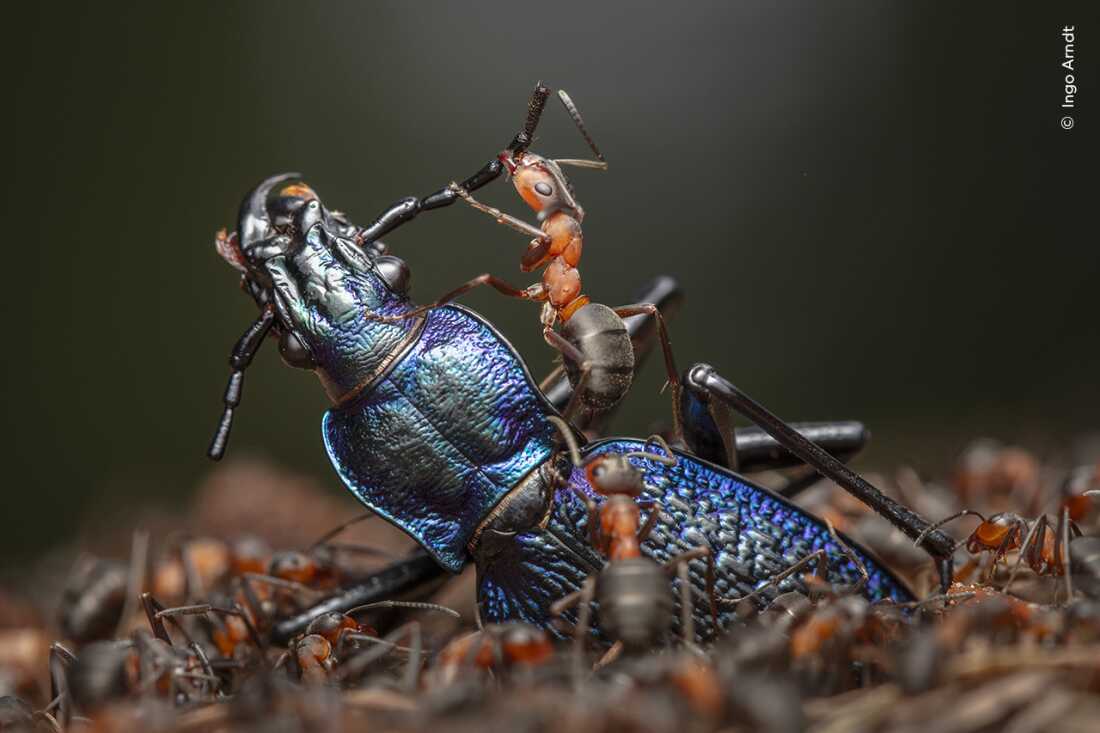Lifestyle
'Deny, deflect, delay': Jeremy Strong channels Trump's mentor in 'The Apprentice'

Jeremy Strong, left, plays attorney Roy Cohn and Sebastian Stan is a young Donald Trump in The Apprentice.
Apprentice Productions Ontario Inc.
hide caption
toggle caption
Apprentice Productions Ontario Inc.
With less than a month until the presidential election, Jeremy Strong’s new movie, The Apprentice, is causing a stir. The film centers on a young Donald Trump (Sebastian Stan) as he’s trying to establish himself in his father’s business as a real estate developer. Strong plays Roy Cohn, Trump’s attorney and mentor.
In May, Trump’s attorneys sent a cease and desist letter, trying to block the film’s U.S. release. The Apprentice opens Friday.
“No one would touch this movie. The studios were afraid to touch it. The streamers were afraid to touch it,” Strong says. “They were afraid of litigation. And they were afraid of repercussions from a possible Trump administration.”
In a statement to the Associated Press, Trump campaign spokesperson Steven Cheung said that the Trump team will file a lawsuit “to address the blatantly false assertions from these pretend filmmakers.”
Strong notes that the move to block the movie seems straight out of Cohn’s playbook: “Deny, deflect, delay. … If you do that vociferously and loudly enough, you will make it so.”
In 1954, Cohn served as chief counsel to Sen. Joseph McCarthy’s Senate investigations into Communist influence in the U.S. government. Cohn and McCarthy also collaborated on an executive order banning gay people from serving in the federal government. Cohn died in 1986 shortly after being disbarred.

Strong is no stranger to difficult or unlikable characters. He won an Emmy for his portrayal of Kendall Roy in Succession, and he also played Lee Harvey Oswald in Parkland. He says he prepared for The Apprentice by reading Cohn’s writings and by leaving his judgment behind.
“You have to really check that at the door as an actor,” he says. “It’s an empathic practice. … I’m simply trying to inhabit him in a fully dimensional way.”
Interview highlights
On the responsibility of playing a real person in The Apprentice
If there’s any improvisation, the improvisation is drawn, usually in my case, from historical record. So, for example, Roy wrote a number of books … and there are sort of wonderful turns of phrase that Roy would use, things like “dead duck” or “phony as a $3 bill,” things that I put into the movie, … just these little granular details that helped give dimension and weight, but also accuracy. … I absolutely feel a sort of fidelity to truth with a capital “T,” which is funny in this case because Roy Cohn, if he’s anything to me, he’s like the progenitor of alternative facts. He’s not someone who really espoused truth with a capital “T.” He thought truth was a plaything that you could do as you wish with it.
On an improvised take of the last scene of the Succession, where he climbed the barrier to the river side, insinuating that Kendall attempts suicide

Strong says his Succession character Kendall Roy had lost everything by the show’s final episode.
HBO
hide caption
toggle caption
HBO
You, I think, learn over a lifetime to obey your deepest instincts. It’s that thing of, better to ask forgiveness than to ask permission. I find that I generally don’t believe in asking permission because, especially now, there’s so many layers of risk averse, safety-oriented [production staff], and these things are all important, but I was obeying a deep impulse.

My feeling and strong conviction was and is — but it’s Jesse [Armstrong]’s show at the end of the day — that this was an extinction-level event for Kendall and that there was no coming back from it. … And at this point, he had lost everything. He had lost his father. He had lost his siblings. He had lost his ex-wife. He had lost his children. He’d lost his putative reason for being. And also, remember, he was an addict. So I just did not believe that he was coming back from that. … The moment I think that Jesse chose is extremely powerful and he’s sort of frozen in a kind of inner scream. And I love that he chose that.
On Kendall’s infamous rap, “L to the OG,” performed at a dinner celebrating his father’s 50th year in the company on Succession
Nick Britell, who’s the composer, called me up … and he said, “Hey, I have this rap. Maybe you could do it at the dinner?” We were filming it three days later, and he played it for me on the phone and I have a recording of it in my voice notes, and it was roughly what it became. I made up the chorus for it and made up the melody for it and made it up in the car as we were driving from Glasgow to Dundee. And it’s just a pretty ad-hoc thing in the making of it. You’re just kind of throwing something together and you’re dancing as fast as you can. And I asked the costume designer, I sketched out a jersey that I thought I could wear, and they made it for me and had it three days later. …
YouTube
I didn’t want anyone to hear it until the first take. So one thing I love about that scene is the look on Kieran [Culkin] and Sarah [Snook] and everybody’s faces, which is just incredible … because they’ve never seen me do it until then.
On whether staying away from other actors on set helps him with his character
It’s not always been a popular answer, but if I’m honest, I would say yes. … [It’s about] taking a break from the social domain so that you can be in touch with yourself on a deeper level.

Kendall, as written, was someone who was going through a very deep level of existential agony and confronting crisis after crisis, including having the death of a person weighing on him. … I don’t take that lightly. And I feel that my job is to actually understand that and try and inhabit that so that when that character says, “I’m blown into a million pieces,” on the dirt floor of the parking lot at the end of Season 4, that I can mean those words. So I have to do whatever I have to do to earn that and arrive at that place. And that often doesn’t involve having a social bon ami with other actors. …
[But] you’re not doing this alone. It might sound like I’m saying you’re doing this alone, but I’m not saying that. … When you’re between “Action!” and “Cut!” it’s something you do together. I personally think that whatever anyone wants to do outside of “Action!” and “Cut!” is their own business. And different people approach this work in different ways and need different things to serve it to their fullest.
On memorizing lines

I’ve been learning plays since I was a little kid and I did theater for my whole life until about 10 years ago, and then I started doing more film and television. But even on Succession, you’re learning a 90- or 100-page script every 10 days. And I have to learn that upside down and left and right and if I was thrown out of a plane in the middle of a cyclone, I would still know it. That’s how well I have to know a text so that I can internalize it the way I feel that I need to. It’s a muscle. So maybe it’s just through habit and repetition … but I have to work very hard at it. Some people have a photographic memory or can just learn things very easily. But I’ve never been someone for whom anything comes particularly easy.
On how his parents’ work influenced him
My father worked in juvenile justice and ran these essentially jails for the Department of Youth Services. My mother was a hospice nurse. They were both sort of givers. They’re both empaths and I think really courageous people. …
I think they actually really shielded my brother and I from that and protected us from any of that heaviness or drama. … That had a huge effect on me, that they did something that really mattered to them. … I do think there was something about how central my parents’ work was to their lives and how much they gave of themselves to it that imprinted itself on me.

Roy siblings Roman (Kieran Culkin) and Shiv (Sarah Snook) comfort Kendall (Strong) as he makes a seismic confession in the Season 3 finale of Succession.
HBO
hide caption
toggle caption
HBO
On seeing acting as freedom from his own anxieties
I would also say that acting and the impulse to do this was initially an escape and wanting to escape from where I lived, from the heaviness that I felt, from the frayed, strained financial situation and struggles that my parents had. It’s a bit of a Houdini act, because you can enter into an imaginary world and be free of all of that. Be free of your circumstances and be free of yourself, because self, as we all I think know, can be a kind of prison. So acting is a liberative process, because you can just immediately be free from the prison of self and from your environment and circumstances.
On leaving his characters — even Kendall Roy — behind
I have a stack of scripts in my office and it’s like this stack of lives that I’ve had that when they’re over, they’re over, and you just put them away and I put it away because I have a life and children. … So I don’t feel more of a kinship with that role than I do with any other role that I’ve ever played, which might sound like a strange thing, because I know it’s the thing that I’ve become known most for … [and it was] a seven-year thing. One day maybe I’ll watch it all back and take in the magnitude of what it was. But I’ve probably had to protect myself from that because I don’t think that that would serve me, if that makes any sense. … I find that you do your work, you do it on the day, you give it everything, and then that’s it. Like, that’s all you need to be involved with. So whether it becomes the biggest thing in the world, whether they release a single, whether something wins the Academy Award, that’s not your concern. Your concern is to be all in when you’re doing it.
Lauren Krenzel and Susan Nyakundi produced and edited this interview for broadcast. Bridget Bentz, Molly Seavy-Nesper and Beth Novey adapted it for the web.

Lifestyle
Strength training may be the key to longevity. How to do it safely as you age

I started strength training about nine years ago for admittedly vain reasons. Fresh off a breakup at the time, weight training offered a welcome distraction and the prospect of a revenge body.
I trained two or three times a week — nothing crazy, just good old fashioned bicep curls, weighted squats, plank holds. But the results were astounding: I lost more than 20 pounds, sculpted my body and had never felt stronger. It was empowering.
Almost a decade later, my weight training is now about being grounded and strong; but the same moderate routine is causing challenges. My elbow barks every time I bicep curl; my SI joint is creaky from sitting all day, which makes my glutes and lower back tight.
Then I sprained my neck and shoulder recently at the gym, which concurrently pinched a nerve. It led to excruciating pain, sleepless nights and an infuriating quest through the medical care system to discover what happened.
“You need to keep those muscles strong because we lose muscle as we age,” one nurse warned while checking my blood pressure. “That’s how injuries happen.”
I couldn’t help but see the irony: Attempting to stay strong is what led to the injury in the first place.
My situation provided a clear conundrum: Copious research shows that strength training, particularly for older adults, is a critical piece of the health and longevity puzzle. Strength training builds muscle mass and strength, increases bone density and improves balance, which in turn helps prevent falls. It enhances joint mobility and reduces joint stiffness. It plays a role in metabolic health, reducing blood pressure and improving glucose metabolism. It even aids cardiac health.
“It’s probably the most important fitness modality out there for longevity,” says Dr. Christina Chen, a Mayo Clinic geriatrician and host of the podcast “Aging Forward.”
But also, strength training gets harder to do during the period of life when we need it most. The older we are, the more susceptible to injuries. Decades of a sedentary lifestyle, osteoporosis, arthritis and other conditions can lead to weakened muscles, more fragile bones and unstable, painful joints, not to mention balance issues. All of which can present challenges — or dangers, if training improperly — at the gym.
After my own injury, I set out to make sense of these two realities. And one thing became certain: The benefits of strength training, even for those in their golden years, still outweigh the risks.
“Every intervention has a risk associated with it, and exercise is no exception,” says Dr. Joshua T. Goldman, a UCLA sports medicine physician. “If you sit in your house in a bubble, you won’t have exercise risks, but you’ll die of heart disease and diabetes or some other disease. The aging population is at risk of getting injured more in general, but it’s certainly very possible to gain muscle as we age. It’s just that more goes into it. You have to be smarter about how you train.”
It’s not a matter of simply weight training as you age, it’s about proper execution, too. So I spoke to doctors, researchers and physical trainers for crucial tips on how to gain muscle without getting injured.
Lifestyle
Lynx, tiger and tadpoles, oh my: See the Wildlife Photographer of the Year winners

Winner, The Bigger Picture, Wetlands: The Swarm of Life by Shane Gross, Canada. Western toad (Anaxyrus boreas) tadpoles swim among lily pads in a lake on Vancouver Island, British Columbia.
Shane Gross/Wildlife Photographer of the Year
hide caption
toggle caption
Shane Gross/Wildlife Photographer of the Year
They lay in wait for hours, weeks and sometimes months, tracking animals in the wild and moving carefully so as not to disturb their surroundings.
They set up their camera traps, framed their shots and seized the moment — from a lynx stretching in the sunshine and a young monkey sleeping in an adult’s arms, to an anaconda wrestling with a yacare caiman and a falcon hunting a butterfly.
Now, thanks to those efforts, they are officially the 2024 Wildlife Photographers of the Year.
London’s Natural History Museum, which runs the prestigious competition, announced the winners of its 18 categories — from underwater to urban wildlife — at a ceremony on Tuesday. The museum narrowed down the winners from a record-breaking pool of 59,228 entries from 117 countries.
The winners will be featured in an exhibition at the Natural History Museum that opens Friday and runs through June, and will also tour internationally to venues across Europe, Canada and Australia. It will also include winners and photographic equipment from years past in honor of the contest’s 60th anniversary.
Museum Director Doug Gurr called the contest’s longevity “a testament to the vital importance and growing appreciation of our natural world.”
“We are delighted to feature such inspiring images in this year’s portfolio,” he said in a statement. “These are photographs that not only encourage further wildlife conservation efforts, but that spark the creation of real advocates for our planet on a global scale.”

Winner, Amphibians and Reptiles Behavior: Wetland Wrestle. Transpantaneira Highway, Mato Grosso, Brazil. Karine Aigner recognizes the skin of a yellow anaconda as it coils itself around the snout of a yacare caiman.
Karine Aigner/Wildlife Photographer of the Year
hide caption
toggle caption
Karine Aigner/Wildlife Photographer of the Year

Winner, Animals in their Environment: Frontier of the Lynx by Igor Metelskiy, Russia. Metelskiy shows a lynx stretching in the early evening sunshine, its body mirroring the undulating wilderness.
Igor Metelskiy/Wildlife Photographer of the Year
hide caption
toggle caption
Igor Metelskiy/Wildlife Photographer of the Year
An international panel of expert judges chose two grand title winners from among the 18, based on the entries’ “originality, narrative, technical excellence and ethical practice.”
The grand title of Wildlife Photographer of the Year went to Shane Gross, a Canadian marine conservation photojournalist who spent several hours underwater documenting western toad tadpoles on the move.

Gross snorkeled painstakingly through carpets of lily pads in Cedar Lake on Vancouver Island, British Columbia, careful not to disturb the layers of silt and algae at the bottom. He was able to snap the tadpoles as they swam up from the depths, dodging predators on their way to feed at the surface.
He titled the stunning scene The Swarm of Life.
“The jury was captivated by the mix of light, energy and connectivity between the environment and the tadpoles,” said jury chair and editor Kathy Moran, noting that the tadpoles are a species new to the winning archive.
Western toads are considered either endangered or threatened in parts of Canada and the U.S., due to habitat destruction and predators. The tadpoles begin their transition into toads between four and 12 weeks after hatching, but an estimated 99% of them will not survive to adulthood.
“I hope the attention this image brings our amphibians and wetlands leads to much-needed and urgent protections,” Gross posted on Instagram after his win. “If you know of an important place in your backyard, let’s rally the community together and fight for [its] protection.”

Winner, Invertebrates Behavior: The Demolition Squad by Ingo Arndt, Germany. Arndt documents the efficient dismemberment of a blue ground beetle by red wood ants.
Ingo Arndt/Wildlife Photographer of the Year
hide caption
toggle caption
Ingo Arndt/Wildlife Photographer of the Year

Winner, The Bigger Picture, Oceans: A Diet of Deadly Plastic by Justin Gilligan, Australia. Gilligan creates a mosaic from the 403 pieces of plastic found inside the digestive tract of a dead flesh-footed shearwater.
Justin Gilligan/Wildlife Photographer of the Year
hide caption
toggle caption
Justin Gilligan/Wildlife Photographer of the Year
Many of the winning images draw attention to the threats facing different species around the world: a mosaic made of over 400 pieces of plastic found inside the digestive tract of a dead shearwater, a type of Australian seabird; a tiger perched on the hillside overlooking an Indian town that was once a forest; a crime scene investigator dusting a confiscated tusk for prints.

The Young Wildlife Photographer of the Year award went to teenager Alexis Tinker-Tsavalas of Germany for his image Life Under Dead Wood, which shows the tiny, fruiting bodies of slime mold (a type of single-cell organism) and a springtail (a non-insect hexapod) beneath a log.

Winner, 15-17 Years: Life Under Dead Wood by Alexis Tinker-Tsavalas, Germany. Springtails and slime molds are two of Alexis’ favorite macro photography subjects.
hide caption
toggle caption
Alexis moved fast, rolling the log over and snapping away quickly, since springtails “can jump many times their body length in a split second,” the judges wrote.
He used a technique known as focus stacking, combining 36 images — each with a different area in focus — to make one image with an even greater depth of field.

“A photographer attempting to capture this moment not only brings great skill, but incredible attention to detail, patience and perseverance,” Moran said. “To see a macro image of two species photographed on the forest floor, with such skill, is exceptional.”
Slime mold and springtails may not be as widely known as some of the other subjects of the winning photographs, like ants and a hawk. Alexis told the BBC that he hopes people will learn more through his images.

Winner, Underwater: Under the Waterline by Matthew Smith, UK/Australia. This was Smith’s first personal encounter with a leopard seal.
Matthew Smith/Wildlife Photographer of the Year
hide caption
toggle caption
Matthew Smith/Wildlife Photographer of the Year

Winner, Mammals Behavior: A Tranquil Moment by Hikkaduwa Liyanage Prasantha Vinod, Sri Lanka. Vinod finds this serene scene of a young toque macaque sleeping in an adult’s arms.
Hikkaduwa Liyanage Prasantha Vinod/Wildlife Photographer of the Year
hide caption
toggle caption
Hikkaduwa Liyanage Prasantha Vinod/Wildlife Photographer of the Year
“I feel like that’s one of the biggest goals for me, to just show this tiny world that a lot of people don’t really get to see, in a different light,” he said.
Entries for the next edition of the contest will be accepted from Oct. 14 through Dec. 5. In the meantime, take a look at more of this year’s crop of winners.

Winner, Birds Behaviour: Practice Makes Perfect by Jack Zhi, Los Angeles. A young falcon practices its hunting skills on a butterfly above its sea cliff nest.
Jack Zhi/Wildlife Photographer of the Year
hide caption
toggle caption
Jack Zhi/Wildlife Photographer of the Year

Winner, Photojournalism: Dusting for New Evidence by Britta Jaschinski, Germany/UK. Jaschinski watches as a crime scene investigator from London’s Metropolitan Police dusts for prints on a confiscated tusk.
Britta Jaschinski/Wildlife Photographer of the Year
hide caption
toggle caption
Britta Jaschinski/Wildlife Photographer of the Year

Highly Commended, Mammals Behaviour: Don’t Look Down by Rick Beldegreen, Torres del Paine National Park, Chile. A group of puma cubs stalks their potential guanaco prey.
Rick Beldegreen/Wildlife Photogprapher of the Year
hide caption
toggle caption
Rick Beldegreen/Wildlife Photogprapher of the Year

Winner, Plants and Fungi: Old Man of the Glen by Fortunato Gatto, Italy. Gatto comes across a gnarled old birch tree adorned with pale “old man’s beard” lichens.
Fortunato Gatto/Wildlife Photographer of the Year
hide caption
toggle caption
Fortunato Gatto/Wildlife Photographer of the Year

Winner, 11-14 Years: An Evening Meal by Parham Pourahmad, Ed R Levin County Park, Calif. Parham watches as the last rays of the setting sun illuminate a young Cooper’s hawk eating a squirrel.
Parham Pourahmad/Wildlife Photographer of the Year
hide caption
toggle caption
Parham Pourahmad/Wildlife Photographer of the Year
Lifestyle
Donald Trump Says He's 'Basically a Truthful Person,' Podcaster Laughs in Face

FLAGRANT
Donald Trump says he’s got some Pinocchio in him … saying he’s “basically a truthful person” during a podcast interview — and, the statement had one podcast host laughing in his face.
The 45th POTUS stopped by “Andrew Schulz’s Flagrant with Akaash Singh” podcast … and, he launched into a discussion of the ads his presidential opponent Kamala Harris is running — saying they’re full of falsehoods about him.
DJT says Kamala’s team is twisting his views on IVF and his use of the word “bloodbath” when discussing the economy in new TV ads … saying it’s all come out as an unfair depiction of him.
Trump says there should be a law against telling lies in campaign ads … before adding he doesn’t lob similar attacks at his opponent ’cause he’s “basically a truthful person.”
At this, Andrew Schulz busts up laughing … asking the Republican candidate for president what that means. It seems he’s laughing more at the phrasing than any sort of incredulity of the statement — but, it still makes for a pretty funny moment.
Former American President Donald Trump, in the Flagrant podcast, describes Prime Minister Modi as the nicest human being but also a total killer.
He added that Modi took him by surprise with his threat of aggressive retaliation against Pakistan when he said we would handle them;… pic.twitter.com/8oOH9ELvx3
— BJP (@BJP4India) October 9, 2024
@BJP4India
Trump also talked foreign policy on the show … and, his comments about Prime Minister Narendra Modi — who he calls one of the nicest guys who also showed him a potentially violent side from time to time — are receiving mixed reactions online.
The election’s in less than a month … and, Trump’s promoting himself as the “basically” truthful candidate.
-
/cdn.vox-cdn.com/uploads/chorus_asset/file/25439572/VRG_TEC_Textless.jpg)
/cdn.vox-cdn.com/uploads/chorus_asset/file/25439572/VRG_TEC_Textless.jpg) Technology1 week ago
Technology1 week agoCharter will offer Peacock for free with some cable subscriptions next year
-

 World6 days ago
World6 days agoUkrainian stronghold Vuhledar falls to Russian offensive after two years of bombardment
-

 World7 days ago
World7 days agoWikiLeaks’ Julian Assange says he pleaded ‘guilty to journalism’ in order to be freed
-

 Technology6 days ago
Technology6 days agoBeware of fraudsters posing as government officials trying to steal your cash
-

 Health5 days ago
Health5 days agoHealth, happiness and helping others are vital parts of free and responsible society, Founding Fathers taught
-

 Virginia1 week ago
Virginia1 week agoStatus for Daniels and Green still uncertain for this week against Virginia Tech; Reuben done for season
-

 Sports5 days ago
Sports5 days agoFreddie Freeman says his ankle sprain is worst injury he's ever tried to play through
-

 News5 days ago
News5 days agoLebanon says 50 medics killed in past three days as Israel extends its bombardment
















